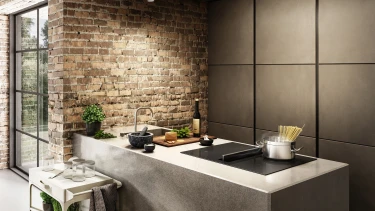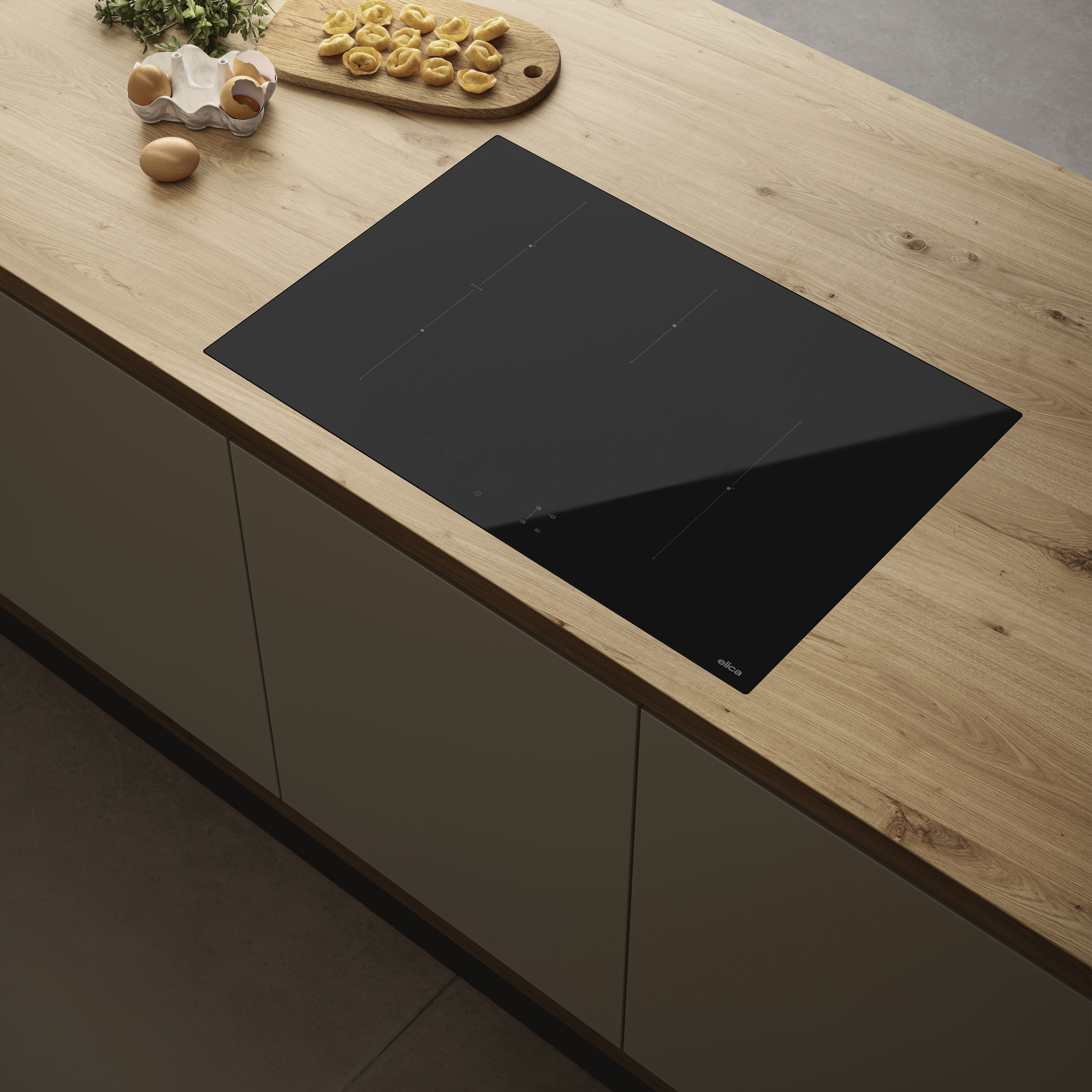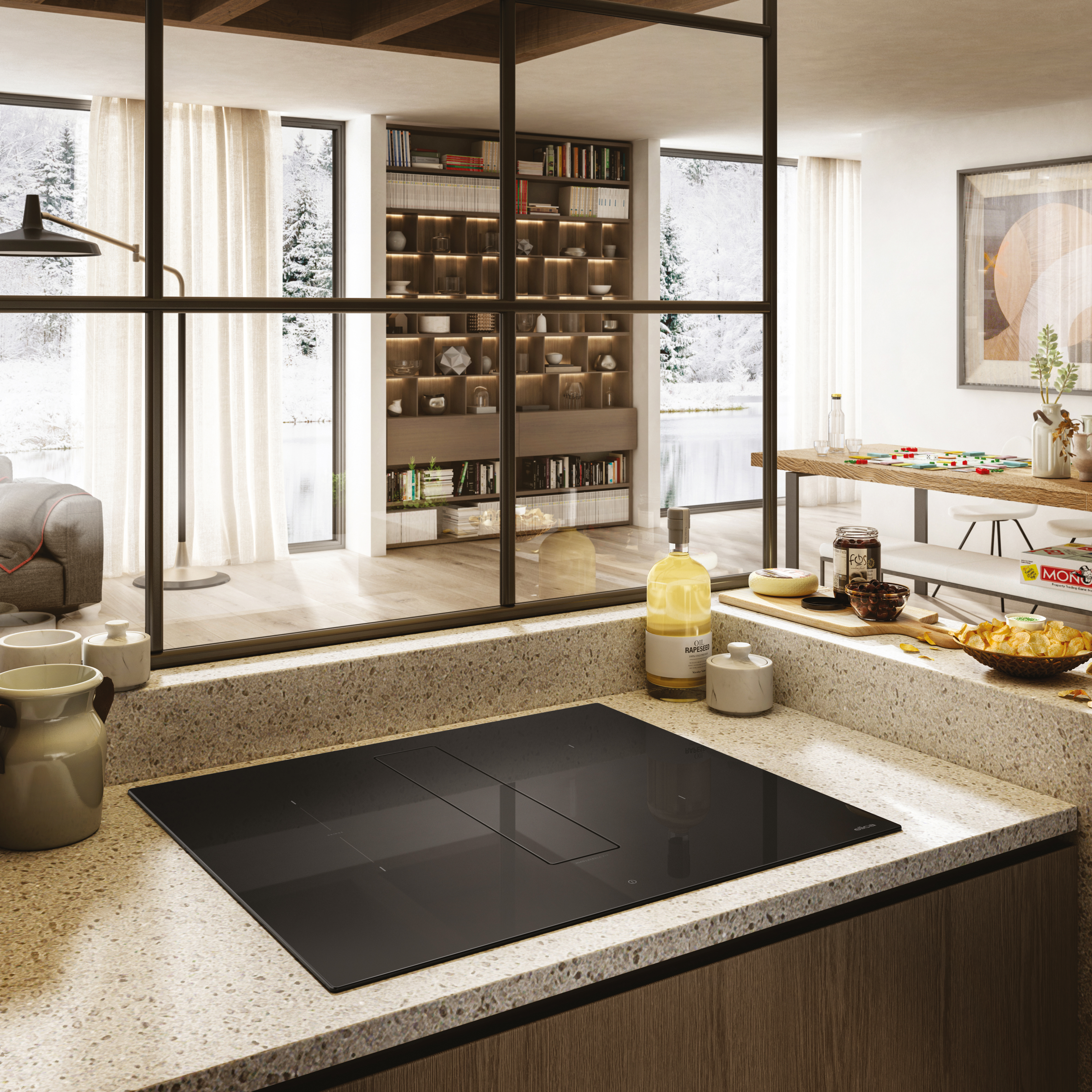
Buying an induction hob involves several considerations. For example: how much power does it consume? How will it impact your electricity bill? And what makes them different from standard gas hobs commonly used in Italian kitchens? Before answering these questions—and debunking some common myths—it’s important to understand how an induction hob works.
Unlike gas hobs, which generate heat through combustion, or conventional electric hobs, which rely on heating elements, induction hobs use electromagnetic induction, offering numerous advantages.
Induction hobs: what are the benefits?
-
No wasted heat - heat is transferred directly to the pan via metal coils.
-
Energy efficiency: unlike gas and electric hobs, where nearly half the heat escapes into the air, induction hobs minimise waste and unnecessary use of energy. They generate heat instantly and distribute it evenly.
-
Cost savings: you only pay for the energy used for cooking, helping to lower your electricity bills.
Energy efficiency and performance
-
Gas hobs: traditional gas stoves are only about 50% efficient. Unfortunately, much of the heat from the flame dissipates into the air, leading to longer cooking times and higher energy costs.
-
Electric hobs: these are slightly more efficient (around 60%), but still do not solve the problem of significant heat loss.
-
Induction hobs: these hobs boast an energy efficiency that can exceed 90% with almost no heat loss. These reduce energy consumption, minimise waste, and help lower electricity bills.
Environmental Impact
Induction hobs are not only more efficient but also more environmentally friendly. They help reduce air pollution and lower greenhouse gas emissions. As climate concerns grow, choosing an energy-efficient cooking solution is more important than ever.
Induction hob: how much does it consume?
There are several factors to bear in mind when estimating how much energy an induction hob uses. We’ll cover everything you need to know, from consumption in the start-up phase to power limiters.
Start up energy use and power consumption
An induction hob mainly consumes on start up, when it generates the magnetic field required for heating. During this phase, it consumes around 2 to 3 kW, but it can increase depending on the desired temperature setting.
Important note: Running multiple power-hungry appliances (e.g. washing machines, dryers, heat pumps, or air conditioners) at the same time may exceed your home's electrical supply capacity. If this happens, contact your electricity provider to request an upgrad
Induction hobs with power limiter
If you don't want to or can't upgrade your home's electricity supply capacity, you may want to consider an induction hob equipped with a power limiter. This system optimises energy use, allowing you to cook on multiple cooking zones without overloading your electrical system. The limiter regulates power consumption of the induction hob to prevent blackouts and interruptions, though in some cases it might increase cooking times.
Benefits for people renovating or living in modern homes
Induction hobs are particularly appealing for those renovating or designing a new home. You may also consider eliminating natural gas entirely - not just for cooking but also for heating - by switching to electric heat pumps. This choice offers several advantages:
-
Improved energy efficiency.
-
Lower consumption.
-
Increased safety: removing gas eliminates the risk of leaks.
Final thoughts: why choose an induction hob?
Induction hobs are at the forefront of modern cooking, offering a perfect balance of efficiency, technology, and design. By choosing state-of-the-art models like those of Elica, you can enjoy:
-
High performance powered by advanced technology.
-
Lower energy bills thanks to reduced energy waste.
-
Modern look, with eye-catching design and high-quality materials.
Therefore, induction hobs are the ideal choice for those who prioritise performance, energy savings, and a more sustainable lifestyle.
.jpg)

